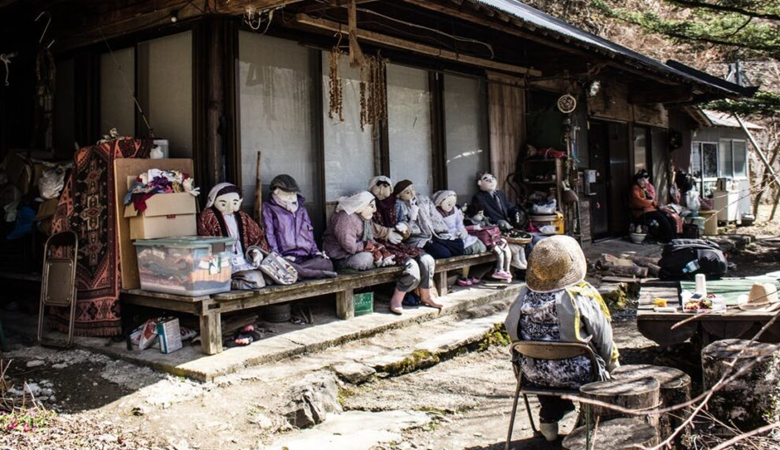Japan’s Aging Villages Face Extinction Amid Rapid Population Decline

News Mania Desk/Agnibeena Ghosh/16th August 2024
In Japan’s rural heartland, a crisis unfolds as entire villages face the threat of extinction due to the rapid aging and depopulation of the countryside. Among these villages is Nanmoku, located about 100 kilometers west of Tokyo in Gunma Prefecture, which is emblematic of a broader national issue. With an estimated 9 million abandoned homes across Japan, known as “akiya,” the reality of a shrinking population is starkly evident.
Nanmoku, once a thriving community in the mountainous interior of Japan’s main Honshu island, has seen a dramatic decline over recent decades. The village, which can trace its history back 140 years, is now home to the third and fourth generations of families like the Kanetas. Masayuki Kaneta, 85, and his son, Shigeuki, continue to bake traditional confections in a village where the once-bustling high street now lies mostly deserted. Masayuki recalls a time when 40 shops operated within 150 meters of his home, but now only a handful of businesses remain. The decline is visible in the boarded-up buildings that line the streets and the abandoned houses scattered throughout the village.
The situation in Nanmoku is a microcosm of a nationwide problem. Japan’s population is rapidly aging, and younger generations are leaving rural areas for opportunities in the cities. In Nanmoku, 67 percent of the population is over 65, making it the village with the oldest population in Japan. Experts predict that many communities in Gunma Prefecture, including Nanmoku, could disappear by 2050 if current trends continue.
The neighboring town of Kanna is also experiencing a similar decline but has found an unlikely source of revitalization. In the mid-1980s, the discovery of a dinosaur footprint led to the development of a fossil-rich tourist attraction, complete with an interactive visitor center and life-sized dinosaur models. The center now draws over 1,000 visitors a day during peak times, such as Japan’s Golden Week holiday. The influx of tourists has provided a boost to the local economy, offering a glimmer of hope for a town grappling with the same demographic challenges as Nanmoku.
In Nanmoku, the village itself has taken steps to attract new residents by building homes with subsidized rents. Yuuta Sato is one of the few newcomers, bringing his young family to live and work remotely while also running community projects to support the elderly residents. Sato’s organization provides a meal delivery service for the housebound and operates a community center that offers assistance to those with mobility issues. Despite these efforts, Sato remains realistic about the village’s future. He acknowledges that while they may not be able to fully revive Nanmoku, they can at least bring a “new breeze” to the community.
As Nanmoku continues to decline, there is a growing acceptance that the village may eventually need to merge with neighboring communities or face extinction. Sato reflects on the possibility that disappearing may not be inherently negative, suggesting that sometimes a reset is necessary to create something new.
At the Kaneta family bakery, father and son continue their work, serving the few remaining customers who stop by. Shigeuki remains hopeful for the future, expressing a desire to see Nanmoku become lively once more, with more homes lit up at night and a renewed sense of community. However, as Japan’s rural areas continue to age and depopulate, the future of villages like Nanmoku remains uncertain.






